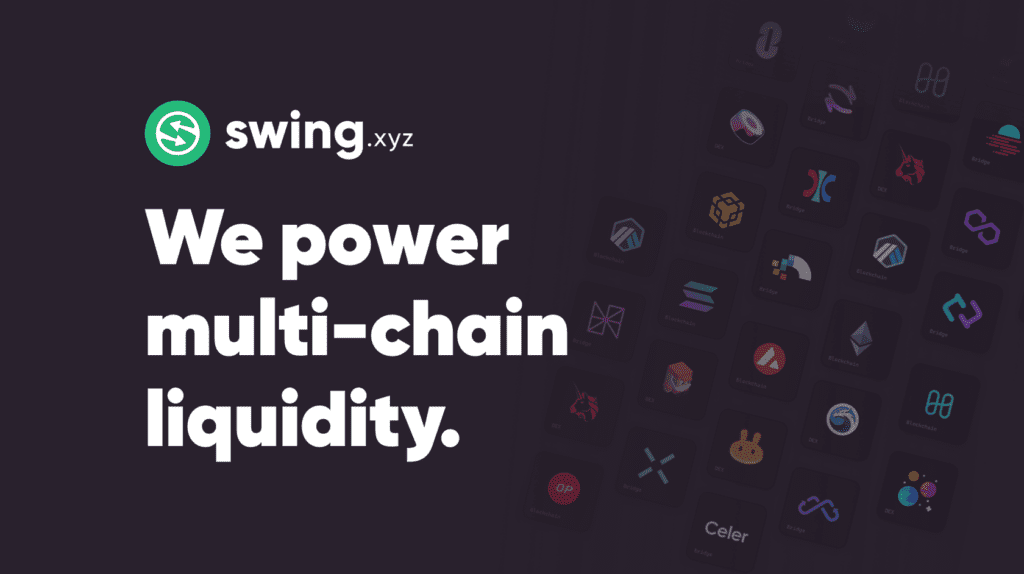Key Points:
- Decentralized cross-chain liquidity protocol Swing launched a new widget and software developer kit to help significantly simplify cross-chain development and increase liquidity with lower friction.
- 21 EVM-compatible chains, including Ethereum, BNB Chain, Arbitrum, and Optimism, are supported by Swing’s new widget and SDK.
- The SDK now allows developers to finish bridge interfaces for their decentralized applications in a matter of hours.
A new widget and software developer kit (SDK) from Swing, a decentralized cross-chain liquidity protocol, makes cross-chain implementations possible with just two lines of code.

21 EVM-compatible chains, including Ethereum, BNB Chain, Arbitrum, and Optimism, are supported by Swing’s new widget and SDK. Four non-EVM networks, including Solana and Cosmos, will also be covered by the protocol, according to announcements.
Cryptocurrency assets can be transferred between multiple networks via cross-chain solutions like bridges. According to Swing, creating these solutions typically takes several weeks, which is why its software package is necessary. The SDK now allows developers to finish bridge interfaces for their decentralized applications in a matter of hours.
Swing’s new Web3 software tools support the unification of bridge aggregation and cross-chain liquidity, greatly streamlining cross-chain development and enhancing liquidity with less friction. The notification said that the procedure might just take a few minutes if the widget is used.

Swing claims that eliminating so-called liquidity fragmentation, in which liquidity is segregated across many blockchains and cannot easily flow between chains, calls for streamlining the cross-chain deployment process. Viveik Vivekananthan, the founder of Swing, stated:
“Accessing cross-chain liquidity is crucial for the ongoing expansion of the blockchain and cryptocurrency sector. Liquidity in the crypto space will move across different networks like a superhighway, reaching the protocols that are best equipped to cater to the influx of new users entering the web3 ecosystem.”
Swing supports numerous bridges in addition to the 21 EVM chains. The project is listed as supporting nine bridge protocols on the website, including Celer, Wormhole, and Hop.
DISCLAIMER: The Information on this website is provided as general market commentary and does not constitute investment advice. We encourage you to do your own research before investing.
Join us to keep track of news: https://linktr.ee/coincu
Harold
Coincu News


















